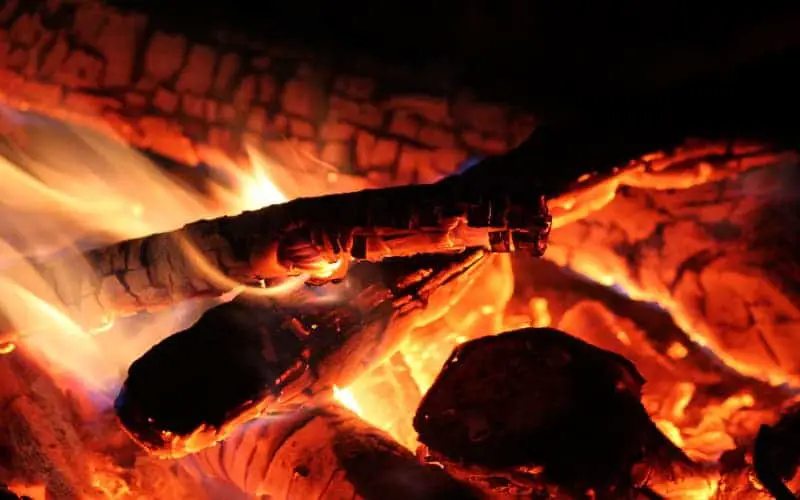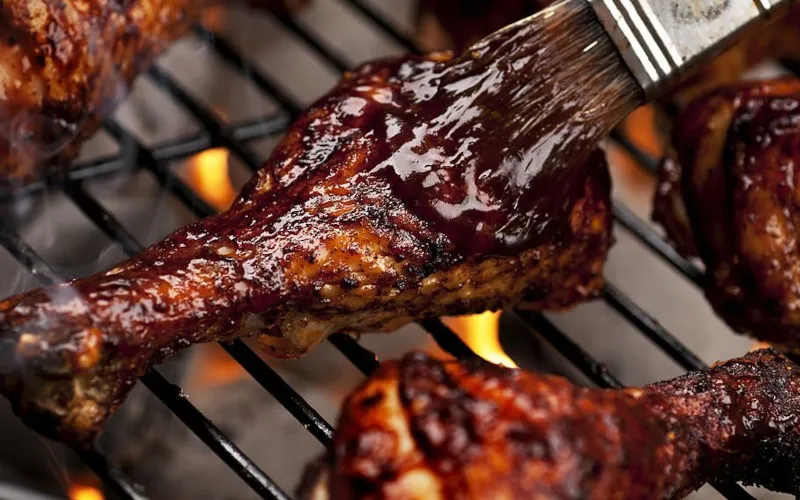As a passionate barbecue enthusiast, I’ve long been fascinated by the friendly debates in our community. One of the most hotly contested topics? Whether to cook your brisket fat side up or down. It’s a simple question with complex answers that can stir up quite a discussion among even the most seasoned pitmasters.
Brisket is a crown jewel in the barbecue world, known for its rich, savory flavor and melt-in-your-mouth tenderness when cooked right. But achieving that perfect brisket requires knowledge, patience, and a keen understanding of cooking. This process is crucial to deciding whether to position the meat fat side up or down during cooking.
This decision might seem minor, but it can significantly impact the brisket’s texture, moisture content, and overall flavor.
So, let’s dive into this culinary debate, explore both sides and hopefully, help you find the best way to cook your brisket for maximum deliciousness.
The Argument for Fat Side Up When Cooking Brisket
First and foremost, let’s talk about flavor. The fat in brisket is where a lot of its rich, mouth-watering taste comes from. As the brisket cooks, the fat slowly melts or renders, seeping into the meat and infusing it with flavor.
Gravity allows you to do the work when you cook your brisket fat side up. The rendered fat naturally drips down, permeating the entire cut of meat and resulting in a juicier, more flavorful end product.
Secondly, cooking a brisket fat side up can provide a protective layer for your meat. The fat cap, as it’s often called, can help shield the meat from the high heat of the grill or smoker.
This can prevent the meat from drying out and becoming tough, a common pitfall when cooking large cuts of meat for extended periods. The fat essentially bastes the meat as it cooks, keeping it tender and juicy.
Another point to consider is the formation of the bark, that coveted outer crust on a perfectly smoked brisket. When you cook your brisket fat side up, the fat renders and mixes with your rub, creating a deliciously crispy and flavorful bark.
This bark adds an incredible texture contrast to the tender meat inside and packs a punch of flavor that complements the beef perfectly.
However, it’s important to note that this isn’t a one-size-fits-all solution. The “fat side up” method may not work well if your heat source comes from the top, as in many home ovens or certain types of smokers. You might consider using the “fat side down” method to protect the meat from direct heat in these cases.
The Argument for Fat Side Down When Cooking Brisket
The ‘fat side down’ camp has some compelling reasons that make this method worth considering. For starters, they argue that the fat cap on the bottom protects against the intense heat from the grill or smoker.
This is particularly relevant if using a direct heat source like a grill. The fat essentially acts as a heat shield, preventing the meaty part of the brisket from getting overcooked or burnt.
Another argument for the fat side-down method is that it helps maintain the structural integrity of the brisket. As the fat renders during the slow cooking process, it can cause the brisket to fall apart if it’s on top. However, with the fat on the bottom, the brisket holds its shape better, making it easier to handle, slice, and serve.
Moreover, those favoring the ‘fat side down’ approach argue that the fat basting the meat (a common argument for the ‘fat side up’ camp) is a bit of a myth. They assert that fat doesn’t penetrate the meat to make it juicier.
Instead, it melts and drips off, taking some of the seasoning. By cooking with the fat side down, you ensure the seasonings stay on the meat and create a delicious, flavorful bark.
There’s also the consideration of smoke absorption. Brisket gets a considerable amount of flavor from the smoke produced during cooking.
Supporters of the ‘fat side down’ method argue that since smoke can’t penetrate fat as well as it can meat, having the fat side down allows the meaty side to get more exposure to the smoke, leading to a more flavorful brisket.
Finally, let’s talk about aesthetics. When cooked fat side down, the top surface of the brisket – the one presented when served – tends to look more appealing. It develops a beautiful, dark bark, often considered a sign of a well-cooked brisket.
Factors to Consider When Deciding Which Way to Cook Brisket
One of the first things to consider is the type of smoker or grill you’re using. The direction of the heat source plays a significant role in how you should position your brisket.
If you’re using a smoker where the heat comes from below, cooking your brisket fat side down can be a protective layer against harsh direct heat. Conversely, if your heat source is above, as in some types of smokers and ovens, you might want to cook your brisket fat side up to shield the meat.
Next, take into account the thickness of the fat cap. A thicker fat cap can provide more insulation and self-basting benefits when cooked fat side up. However, if the fat cap is thin or uneven, cooking the fat side down might be a better option to prevent the meat from drying out.
The specific cut of your brisket also matters. The primary cuts are the point (the thicker, fattier end) and the flat (the thinner, leaner end). The point tends to be more forgiving and can usually handle being cooked either way.
However, with its lower fat content, the flat might benefit from being cooked fat side up for extra moisture.
Personal preference also plays a big part in this decision. Some people swear by the crispy bark that forms when cooking a brisket fat side up. Others prefer the rich, beefy flavor from cooking its fat side down, allowing the juices to baste the meat directly.
Finding out what you and your family or guests prefer might take trial and error.
Lastly, don’t forget about the weather! If you’re barbecuing in cold or windy conditions, you might want to go with the fat side down to protect the meat from the elements. Fat side up could work just fine on a calm, sunny day.
Expert Opinions on Cooking Brisket
The brisket debate, to cook it fat side up or down, is not just a discussion among amateur barbecue enthusiasts like you and me. It has also stirred the pot among professional pitmasters and celebrity chefs. Let’s delve into their expert opinions on this matter.
Starting with Aaron Franklin, owner of Franklin Barbecue in Austin, Texas, often referred to as the ‘King of Brisket.’ He prefers to cook his brisket fat side up. His reasoning?
He believes the fat turns into the meat, creating a self-basting effect that keeps the brisket moist during the long smoking process. Plus, he suggests that the fat helps create a flavorful bark when combined with the rub.
On the other hand, we have Tuffy Stone, a five-time World Champion Pitmaster. Stone advocates for cooking brisket fat side down. He argues that the fat cap acts more as a barrier, protecting the meat from the heat source.
In his opinion, the juices that render out from the fat are more likely to drip off rather than absorb into the meat.
Then there’s Myron Mixon, a four-time World Barbecue Champion. He takes a slightly different approach. Mixon trims most of the fat off his brisket before cooking. He believes the secret to a juicy, flavorful brisket lies in the injection and mop sauce, not the fat cap.
Steven Raichlen, a barbecue cookbook author, and TV host, offers a more nuanced view. He suggests that the direction of the fat cap should depend on where the heat source is.
If the heat comes from the top, the brisket should be cooked fat to protect the meat. Conversely, the brisket should be cooked fat if the heat comes from the bottom.
Even among the experts, the “fat side up” vs. “fat side down” debate continues. Each method has its proponents who swear by their results. What’s clear, though, is that there’s no definitive right or wrong answer.
It seems the best method depends on several factors, including your smoker’s design, the specific cut of the brisket, and your flavor preferences.
So, don’t be afraid to experiment. Try both methods, see which one you prefer, and don’t forget to enjoy the journey. After all, isn’t that what barbecuing is all about? The experience, the experimentation, and ultimately, the satisfaction of serving up a deliciously cooked brisket crafted with your hands.
Conclusion
The great brisket debate boils down to personal preference and the specific conditions you’re cooking under. Whether you choose to cook your brisket fat side up or down can depend on many factors, including the type of smoker or grill you’re using, the thickness of the fat cap, and your taste preferences.
Both methods have their merits. Cooking brisket fat side up can result in a self-basting piece of meat, rich in flavor and juiciness, while fat side down can provide a protective layer against direct heat.
The key is experimenting with both methods and seeing which works best for you and your barbecue setup.
Remember, barbecuing is as much an art as it is a science. It’s about more than just following a set of rules – it’s about understanding how different factors interact to create a delicious final product. So fire up that grill or smoker, and discover your perfect way to cook brisket.
In the barbecue world, there’s always room for exploration, learning, and, most importantly, enjoying some damn good brisket.
Happy grilling, my fellow barbecue enthusiasts!





